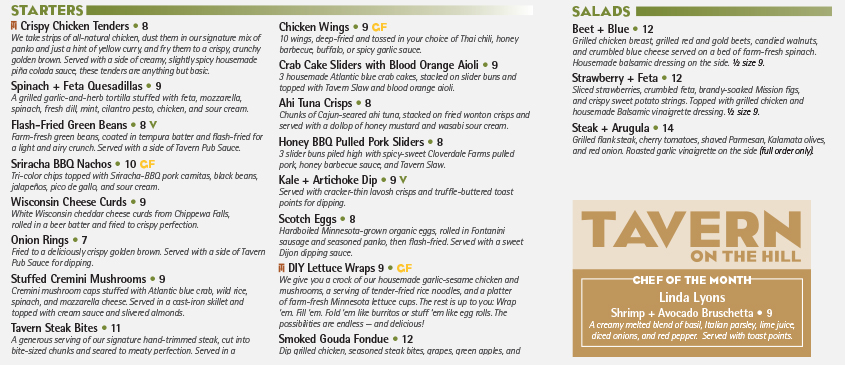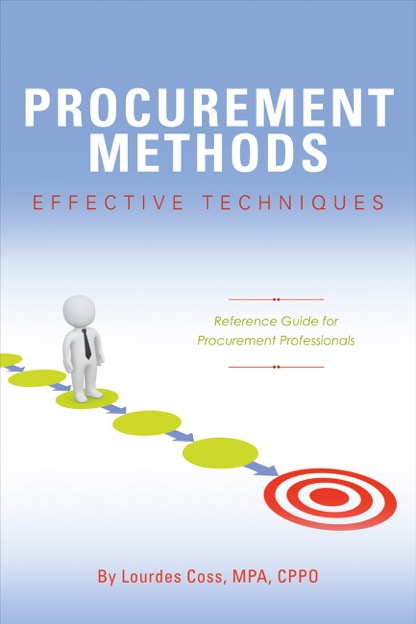Tag: Food & Beverage
Need a complete overhaul of your menu? A well-crafted advertorial? A team of experts to manage your social media account?

Our team has decades of experience writing for prestigious restaurants, franchises, wineries, and food manufacturers, including:
- Américas, The Woodlands, TX
- Benihana, The Woodlands, TX
- Black Woods Grill & Bar, Duluth, MN
- Bob’s Steak & Chop House, Dallas, TX
- Gundlach Bundschu Winery, Sonoma, CA
- Hess Winery, Napa Valley, CA
- La Brea Bakery, Los Angeles, CA
- Logan Farms Honey Glazed Hams, Houston, TX
- Otis Spunkmeyer, San Leandro, CA
- Sara Lee Corporation, City, ST
- Schramsberg Vineyards, Napa Valley, CA
- Tavern on the Hill, Duluth, MN
- Yao Restaurant, Houston, TX
- CHI Japanese Cuisine and Lounge, The Woodlands, TX

Your On-Call Team of Food and Beverage Writers
When you work with us, you get much more than a freelancer – you get a proactive, deadline-oriented team of creative and experienced writers ready to take on your next big project.
Example Projects
Social Media Campaigns
Are you going for fun, funky or fresh, or refined for the true connoisseur? Whatever your goal, we’ll manage your content, schedule your social posts, and interact with your fans on social sites such as Facebook, Twitter, Instagram, SnapChat, and more.
Menus
We can write your menu from scratch or update your current menu. We can also create accompanying inserts such as lunch menus, drink and dessert menus, or curbside menus.
Marketing Campaigns
From big-picture campaign concepting to taglines, brochures, print ads, advertorials, or event/tradeshow collateral, our team can help you craft a marketing campaign that strengthens your brand awareness and connects with your customers.
Corporate and Franchisee Communications
The Writers For Hire can create all of your corporate and internal communications pieces, including franchisee materials, training manuals, newsletters, speeches and presentations, executive updates, annual reports, and more.
Request A Quote
or
Call 713-465-6860
RFP Response Roundtable: Procurement Experts Divulge Best Practice Tips
Have you landed the world’s largest customer? The U.S. government is the largest single purchaser of goods and services in the world, awarding approximately $500 billion in contracts every year.
And the government isn’t only interested in contracting with big corporations. Most government agencies set aside a percentage of their acquisitions for small businesses, sometimes focusing on specific designations like: women-owned small businesses (WOSB), service-disabled veteran-owned small businesses (SDVOSB), and small businesses that are located in historically underutilized business zones (HUBZone). In fact, 23 percent of all prime government contract dollars (totaling over $90 billion annually) are directed to small businesses.
But you have to jump through lots of hoops to get a share of those billions. The government contracting process is notoriously rife with legalese and red tape. Reading a complex RFP is challenging enough, but composing an articulate response that addresses all points can seem mindboggling indeed.
So, we’ve rounded up a panel of experts to help cut through the jargon (also see the glossary at the bottom of this post).
We interviewed experienced procurement professionals to determine the ins and outs of writing a show-stopping RFP response. They shared opinions on how to get your RFP response noticed as well as practices guaranteed to land your proposal straight in the trash bin.
”
Meet the Experts
 Kyla Moore is a contracts specialist for the State of Washington Office of Superintendent of Public Instruction.
Kyla Moore is a contracts specialist for the State of Washington Office of Superintendent of Public Instruction.
Brett Cook is a contract specialist for the Department of Veterans Affairs.
Kelly Porter is Senior Multimodal Planner at Capital Area Metropolitan Planning Organization.
Lourdes Coss is a procurement professional with over 25 years of experience, and the author of Procurement Methods: Effective Techniques.
Beth Morley taught courses in Business Communication and Advanced Business Communication at the University of Texas at Dallas, within the Naveen Jindal School of Management.
Carol Wilson is Director of Procurement for the State of Connecticut Department of Administrative Services.
Q: What are things you like to see in a proposal?
Kyla: Well designed, professional proposals tend to visually stand out. However, that doesn’t always mean they contain the best content or are best suited to provide the services requested in the RFP. In the end, the proposal that best meets the requirements and is most advantageous to the State will be declared successful.
Kelly: All tasks were addressed in the proposal response and a unique approach is clearly articulated. Clear budget with staff time allocations, project timeline, and an executive summary.
Brett: An RFP response that stands out from the crowd is one that first and foremost has followed the “Instructions to Offerors” carefully. Many companies gloss over the instructions on what exactly they need to include in their response. Also a response that looks professional, organized, and one that is easy to navigate (table of contents, clear section headings, etc.). I personally like to see a company’s price quote separate from the technical proposal when submitting responses electronically.
Beth: When responding to RFPs in general, make sure you do basic things like spell the company name right and take the time to explain to them that you understand their problem. Make sure it’s personalized and customized to their particular problem. Show expertise in their industry and that you’re not just providing generic solutions to the problem.
Carol: Some companies have it together and present their information in a really organized format. You can tell they read the RFP, understood it, and are responsive. They took their time in reading it and knowing what they need to provide.
Q: What are things that land a proposal in the reject pile?
Kyla: Late proposals are the biggest cause for rejection in our agency. Additionally, incomplete proposals may be deemed non-responsive.
Kelly: When a proposal is non-responsive or does not include required documentation. We follow our proposal format guidelines closely.
Brett: Mistakes, such as not addressing all of the evaluation factors, not signing and acknowledging all amendments to the solicitation, and submitting responses after the specified due date and time, all send the proposal to the reject pile.
Lourdes: Disorganized proposals because that forces the committee to spend a lot of time figuring it out so they could be a little frustrated. Canned proposals that are so general you can tell that no thought was put into it. Sometimes people use a previously submitted proposal and forget to change the name of the agency – this shows a lack of attention to detail. Incomplete proposals where they don’t submit all of the required forms.
Q: What are the biggest mistakes you’ve seen companies make?
Beth: You have to follow directions because [government agencies] will disqualify you for any little thing you miss. Whatever their requirements, make sure you’ve ticked off each thing and follow their specific format. Don’t get overly verbal. Look at the way you’re formatting your proposal so you don’t give them a novella.
Carol: If the RFP includes a sample contract, read that, too, to make sure you can agree to the terms and conditions. Some companies just look at the price schedule and skim over the terms and conditions, which can lead to problems. This is usually due to a lack of reading.
Lourdes: Sometimes [companies] are worried about meeting the criteria on financial capacity or don’t have all their financial information in order, so they don’t submit the required financial information. Here’s a suggestion: [Rather than leaving the information out altogether], say, “We’re privately held,” offer a ratio for your total assets, and add, “If you need more information, you’re welcome to coordinate a meeting with us, and we’ll show you our space.”
Q: What are contractors most confused about in the RFP process?
Kyla: The question I tend to see most often is from independent consultants asking how to represent their team structure and/or internal controls. This part of our proposal asks the vendor to provide a description of the proposed project team structure and internal controls to be used during the course of the project. Many independent consultants are confused by this part because they are the sole person providing the task. We suggest that they simply identify themselves as a sole proprietor that will provide all services listed in the procurement, if that is the case.
Brett: Many companies want to meet with contracting officers or end users at the hospital regarding specific upcoming requirements. We cannot discuss specifics before a solicitation is posted publicly on either FBO or GSA. This keeps certain companies from having an unfair advantage when responding to solicitations. The best thing a company can do is to view solicitation postings daily on GSA or FBO to see if there are requirements they are capable of responding to.
Also, many small businesses do not know the best way to get their foot in the door with the government. The best first steps small businesses can take is to visit the Small Business Administration’s website, SBA.gov, or contact their local government agency’s contracting office to see if they can speak to their Small Business Liaison.
Lourdes: [Companies] have trouble interpreting terminology. These forms are often drafted with legalese, not business language. As procurement officials, we advocate for simpler language but sometimes it has to be written a certain way. Procurement officials have trouble with forms that are filled out incorrectly or incompletely.
Carol: Government doesn’t make it easy. I was in private procurement for 15 years before I came here. The processes are the same but it’s different in government because of all the laws the attorneys implement in the contract. In Connecticut, our basic contract is over 30 pages long. It intimidates small businesses to look at that without hiring a lawyer. In each state there’s a PTAC, a Procurement Technical Assistance Center, funded by the state and federal government. While I can’t help a vendor respond to an RFP, these centers can help them write and respond better.
Q: What should companies do when an RFI is issued?
Lourdes: This is your opportunity to offer strategies without revealing corporate secrets. The agency probably hasn’t even formulated the problem. You can present examples of technology that you’ve implemented somewhere else, and this helps the agency in their thought process as they’re developing the RFP requirements. This allows you to position yourself to make your technology and your products more desirable. You put yourself in a better position if you take advantage of this preview opportunity and respond to the RFI.
Carol: For an RFI, [government agencies] just want information. [RFIs] don’t end up as an award, so just share what you have, so we can learn from you and your product or service. This enables us to be better educated.
Q: Tips for Women- or Minority-Owned or Economically Disadvantaged Small Businesses?
Lourdes: The set asides for these are usually smaller projects, routine tasks that are not high profile. But it could be a multi-year contract. Sometimes these groups go beyond the scope of the RFP and end up being too [costly], making them less competitive. Instead of pricing a Cadillac, price within the scope. Ask questions to clarify the scope. Then if you have “value added,” you can price that separately.
Carol: In Connecticut, we set aside 25% for small and minority businesses. Each state has a different spin on it. The federal government and state government have different requirements so there’s a lot to sort through if you’re a small local business. We try to help with educating them on requirements and on how to do business with the state. I would advise them to be as complete as possible and don’t hesitate to call with questions. But call before the due date! Start working on your proposal as soon as possible.
RFP Dos and Don’ts
RFP Response Best Practice
- Provide clean and crisp writing, free of grammatical errors.
- Maintain a professional tone and incorporate industry jargon.
- Use substantive language without filler.
- Format the document according to RFP specifications.
- Fully understand the solicitation and address all points.
RFP Response Red Flags
- Offering gifts, loans, or gratuities to government employees.
- Submitting a late proposal.
- Providing vague statements instead of specific details.
- Using fluffy language instead of professional wording.
- Overinflating your price.
- Including technical or grammatical errors.
If you aren’t selected for a contract, consider asking for a debriefing to learn what may have influenced that decision and what you can improve on future proposals.
GLOSSARY
Proposal Jargon
- RFP: “Request for Proposal” – A formal invitation for contractors to submit a proposal to provide certain goods or services.
- RFI: “Request for Information” – Issued in advance of an RFP, an RFI is used to gather information about what contractors have the potential to offer.
- IFB: A formal request for contractors to submit a bid. The IFB selection is made strictly on price, whereas the RFP selection process considers other factors.
- RFQ: Similar to an IFB, the RFQ invites contractors to bid on a project. Selection is based on price without considering the more extensive factors involved in an RFP.
Small Business Special Classifications
Some of these classifications receive nearly 10% of federal contracts, making it well worth the effort to achieve certification.
- HUBZone: These businesses are located in Historically Underutilized Business (HUB) Zones.
- WOSB: Women-Owned Small Businesses.
- EDWOSB: Economically Disadvantaged Women-Owned Small Businesses.
- SDVOSBC: Service-Disabled Veteran-Owned Small Business Concern Procurement Program.
- SDB: Small Disadvantaged Business.
Procurement Vocabulary
- Offer: A reply to an agency’s solicitation.
- Acceptance: An action that forms a legally binding agreement.
- Consideration: The cause for entering into a contract.
- Mutuality of Obligation: Agreement that both parties are bound to the contract.
Major Roles in Government Contracting
- Contract Manager: Drafts documents, communicates with the contractor, monitors progress and performance, and approves the final product.
- Contract Administrator: Handles contract changes, dispute resolution, payment approval, and contract closeout.
- Purchaser: The authorized purchasing agent who legally binds the agency and enforces laws, policies, and procedures.
How to Enhance Your Website’s Credibility
In my last blog, I talked about taking the fluff out of your company’s website – getting rid of phrases like “we’re dedicated to” and “our mission is” and actually saying something about your services.
I’m following that up with more ways that you can build credibility on the web and turn casual visitors into paying customers.
Here are a few pretty easy things you can do to make your website work harder for you: Continue reading “How to Enhance Your Website’s Credibility”
Taglines 101
As a business owner or service provider, few things are as important as a good tagline. After all, your tagline will appear on absolutely everything, from business cards and mailers to print ads and billboards. Your tagline will help with your branding, build your company’s identity, and (hopefully, anyway) burn itself into the minds of your current and prospective clients. A good tagline is the cornerstone of any great marketing campaign.
As a copywriter, coming up with a good tagline can be one of the most challenging tasks you’ll ever encounter. At best, writing a tagline is a great creative exercise – at worst, it’s a frustrating case of writer’s block waiting to happen.
Need some inspiration to help get your creative copywriting juices flowing? Read on for five tips to help you kick-start your next tagline assignment.
1. Make a list of differentiators. What makes company XYZ different from the rest? Do they offer 24/7 service, seven days a week? Are their products “green”? Have they been around longer than the other guys? Have they invented a revolutionary technique? Often, the things that make a product unique can be great starting points for a memorable tagline.
2. Think adjectives. Write down every adjective that comes to mind when you think of company XYZ’s product or services. Even better, ask them how they’d like people to see them – do they want their customers to view them as fun and exciting, or would they prefer to be known as experienced and reliable? A few good adjectives can help set the tone for your tagline.
3. Go with the flow. Now isn’t the time to censor yourself – write down absolutely everything that pops into your head, no matter how ridiculous. Spend a good 20 to 30 minutes in stream-of-consciousness mode and just write. Sure, you’ll come up with a lot of junk, but you’ll almost always come up with a few solid ideas you can run with.
4. Work together. As they say, two heads are better than one. Hunt down a coworker and have a brainstorming session instead of going it alone. Taglines can be a lot easier (and more fun) to write when you’ve got a partner.
5. Beg, borrow, and steal. Not literally, of course (that’s plagiarism) – but, spending some time looking at other companies’ taglines can help you get a sense of what works and what doesn’t. Need a starting point? Check out The 100 Best Advertising Taglines Ever and 22 Companies With Really Catchy Slogans and Taglines– they’re good sources of inspiration for taglines for everything from paper towels to diamonds.
Got any other tips for writing solid taglines? Do you have a favorite tagline? Leave a comment and share it!



